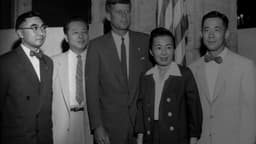Home / Arts and Entertainment / Photographer Steve Schapiro's Powerful Civil Rights Legacy Preserved
Photographer Steve Schapiro's Powerful Civil Rights Legacy Preserved
17 Nov
Summary
- Photographer Steve Schapiro documented key moments of the Civil Rights Movement
- Captured Martin Luther King Jr.'s room hours after his assassination
- Noticed King's eyes often showed "slight fear" due to death threats

The late photographer Steve Schapiro, who passed away in 2022 at the age of 87, is being remembered for his powerful documentation of the Civil Rights Movement. In a new film, "Steve Schapiro: Being Everywhere," director Maura Smith looks back on Schapiro's wide-ranging career, with a particular focus on his work capturing pivotal moments from that era.
Schapiro was on the scene for many history-making events, including the third march on Selma, Alabama in March 1965, which led to the Voting Rights Act being signed into law. He also photographed Martin Luther King Jr.'s room at the Lorraine Motel in Memphis, just hours after King was assassinated on the balcony outside. Reflecting on these images, Schapiro noted that he often saw a "slight fear" in King's eyes, as the civil rights leader was receiving death threats daily.
The film's executive producers, who knew Schapiro for decades, agree that his photographs from the Civil Rights Movement stand out as the most impactful work of his career. As one producer states, "It's one thing to get excited about Steve Martin holding two kids upside down for a poster on Parenthood; it's another to see history -- to see one photograph define a period of time in our country that was in such turmoil."




